Testament by Napoléon Bonaparte
White and gilded edition,
numbered from 1 to 1000,
French edition
Deluxe format (10 x 14")
Napoléon Bonaparte's Will - A manuscript at the intersection of history and intimacy
Longwood, Saint Helena’s Island, 5th May 1821. Napoleon’s final hours. He had been sure, in the weeks that preceded, to commit his final wishes to paper. He had dictated, copied out by hand and signed the pages that make up this exceptional document, conserved in the fascinating iron strongbox of the National Archives - known as the Armoire de fer.
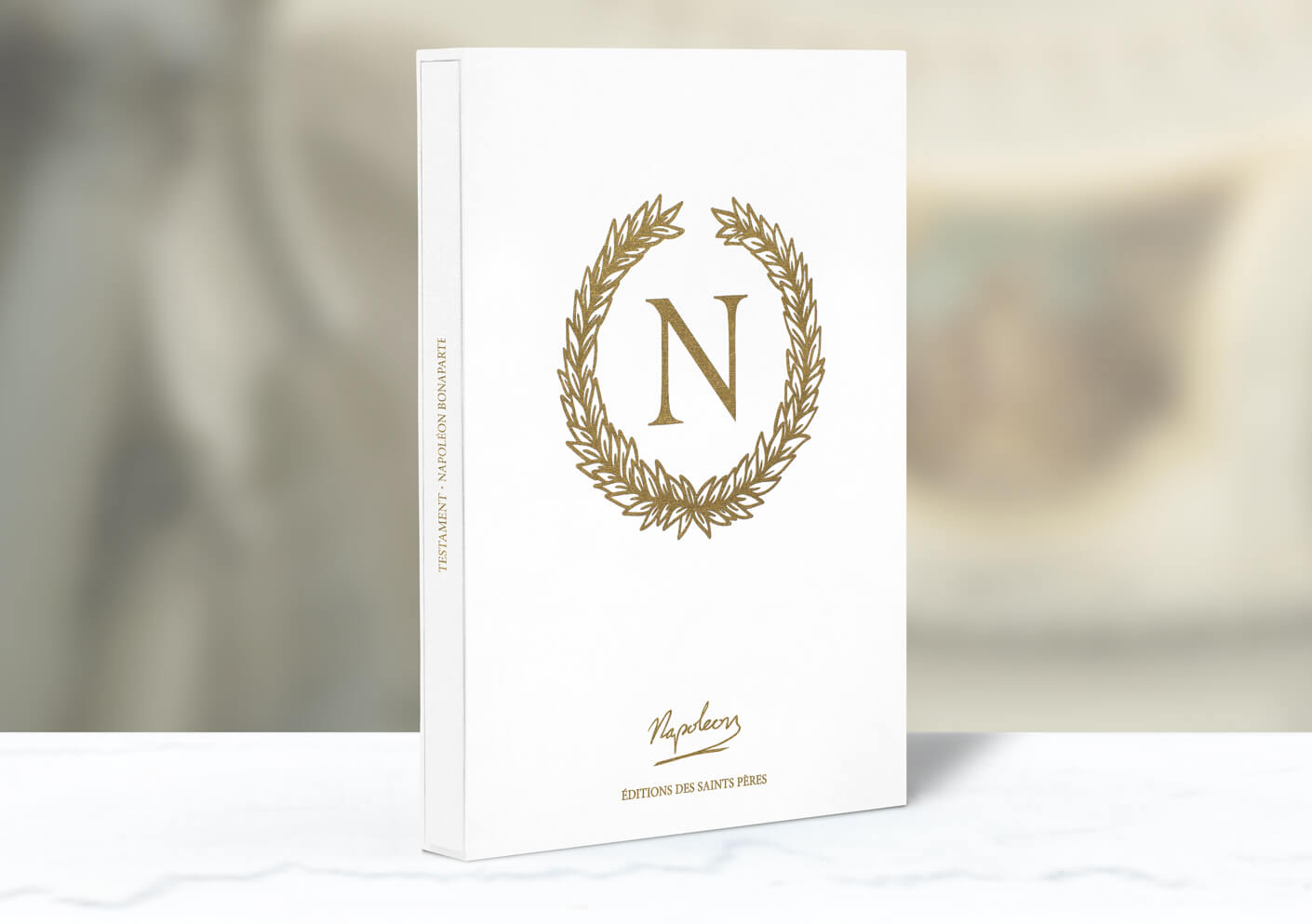
A principal act, nine codicils, inventories listing objects in his possession (furniture, weaponry, clothing) and precise instructions to the testamentary executors: the ensemble of Napoleon’s testamentary documents represents around forty pages, where his handwriting in black ink, elegant, sometimes considered, sometimes hurried, generous or parsimonious, tells the tale of his final wishes.
Here, this legendary character is revealed: a man of faith, a husband who nurses ‘tender feelings’ for his wife, a father who advises to his son to dedicate himself to the French people, who he himself so loved; a war leader full of gratitude for the loyalty of his soldiers and his companions in exile; and a man concerned with posterity, expressed, for example, by his desire to see his biography written by the academic Antoine Vincent Arnault, and his wish to be laid to rest on the banks of the Seine.
But it is also “a text with political implications and a long list of bequests to individuals, to local entities having suffered from the defeats of 1814 and 1815 and to the hundreds of thousands of soldiers from the armies of the Revolution and the Empire” explains Thierry Lentz in his introduction (see below).
The desires of a dying man, exposed in successive strata
These weeks before his decease were the occasion for Napoleon to create a plan, to reflect, to repent, to draw conclusions, which would be visible in the lines – and between them – and the successive adjuncts to the Will. But the Testament is also the result of a long reflection undertaken almost six years previously, at the moment of his depart from France, in July 1815. Three preparatory documents, today disappeared, preceded this one.
Three testamentary executors, present at Saint Helena by his side, would assure that his wishes were respected: the General-Count of Montholon, his chamberlain; the General-Count Bertrand who was the Grand Marshal of the Palace; and his first Chamber Valet, Marchand. In the presence of the Abbot Vignali, these trusted men signed and sealed the document.

The journey of the Will
As a British overseas territory, the island of Saint Helena complexified the question of the jurisdiction to which the will belonged. The executors decided to depose it in England: on the 10th December 1821, Montholon presented it to the Prerogative Wills Office in London. “The will and codicils were in security, and moreover, in secrecy,” explains Chantal Prévot in her preface. “The Empress Marie-Louise and the Austrian government, despite their attempts, would not be aware of the Will’s contents for a long time. From that moment on, regulations would proceed according to British legislation, which gave total liberty to the deceased to choose their heirs.”
It would be necessary to wait until 1853, after a request from Napoleon III to the Queen Victoria, for the Will and its codicils be returned to the Count Walewski, ambassador of France and moreover, illegitimate son of Napoleon. The documents were presented on the 25th of March in a salon at the Tuileries, before being endorsed, signed and initialled the following day by the President of the Tribunal of the Seine, Louis-Marie de Belleyme, and finally turned over to the Imperial Archives on the 10th October 1860.
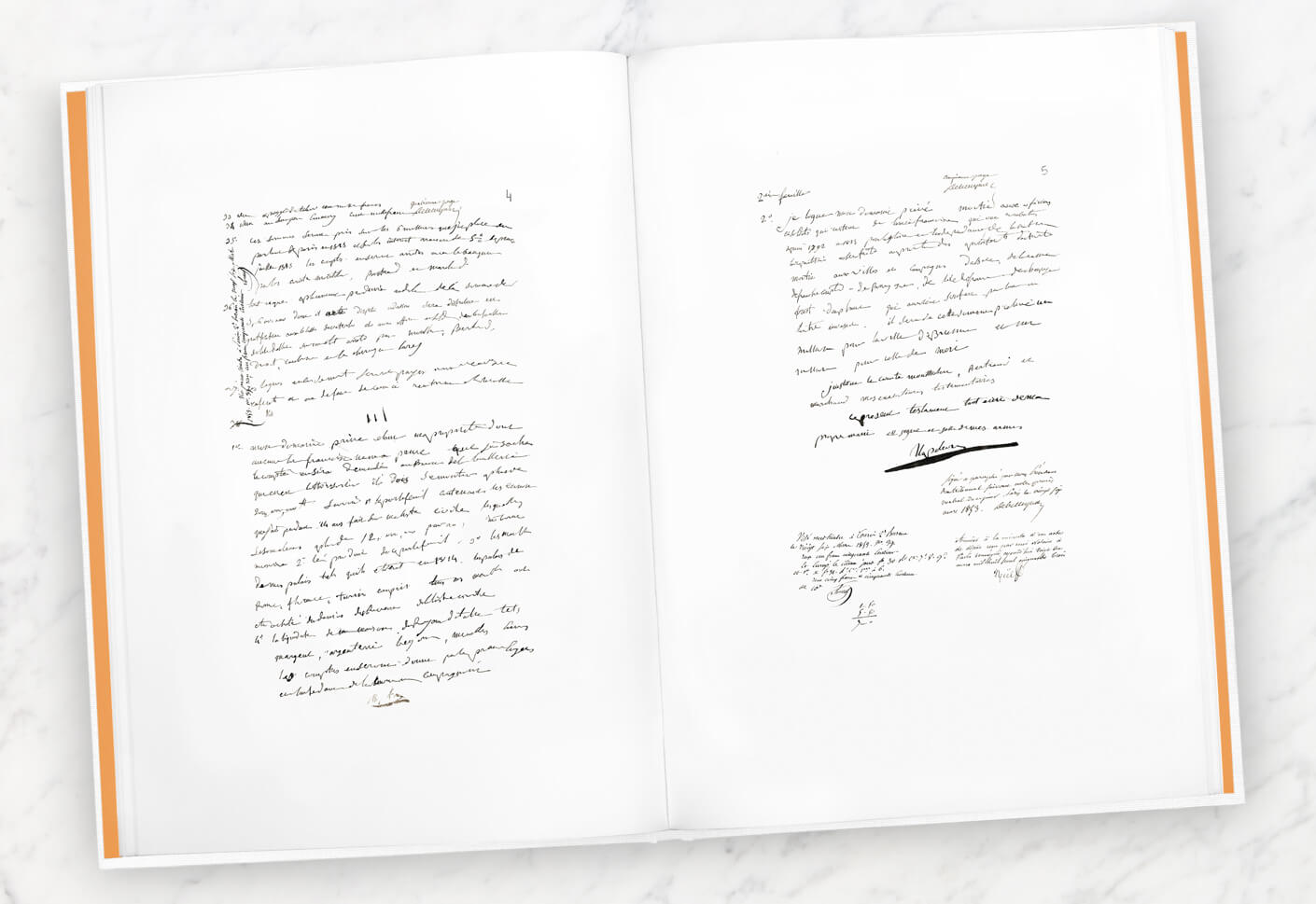
An intriguing manuscript
Many factors contribute to the intrigue and mystery surrounding the manuscript for those who go to the trouble of deciphering it. From a financial perspective, the distribution of a sum of nearly 200 million francs which, in reality, Napoleon wasn’t in a position to offer, as well as the breadth of the donations, reaching potentially up to a million people provided the executors with a conundrum. Another complicating factor was provided by the non-conformity of the Will regarding the Civil Code. The difficulties were only heightened when Napoleon III “for family honour and political opportunity, took on the role of fourth executor of the will to honour all the personal and collective bequests designated by his uncle.” These various moral, political and practical elements contributed to the abnormally long length of execution of the Will – nearly forty years – as well as the controversies and trials that surrounded it (see Chantal Prévot’s preface).
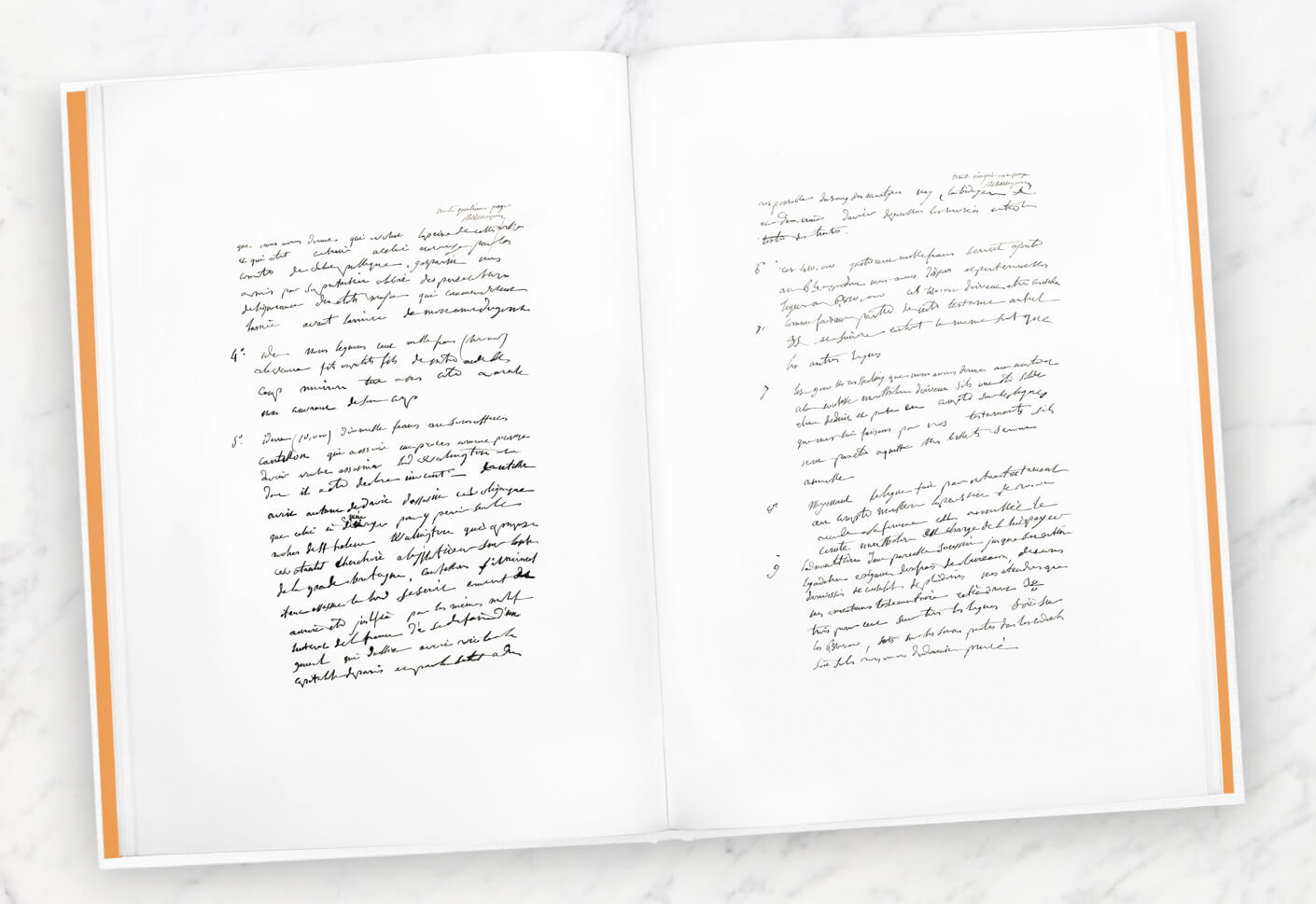
A reproduction enriched with explanatory texts, a transcription and a list of the Emperor’s beneficiaries
The Will is accompanied by an introduction by Thierry Lentz, an analysis by Chantal Prévot, a transcription of the Will and a list of beneficiaries.
An introduction by Thierry Lentz
General Director of the Napoleon Foundation, Thierry Lentz is an associate professor at the ICES- Institut Catholique de Vendée. He is the author of over forty works on the Consulate and the First Empire, including Napoléon. Dictionnaire historique (Perrin, 2020), Pour Napoléon (Perrin, 2021) and Napoléon et le monde 1769-2025 (Belin, 2025.)
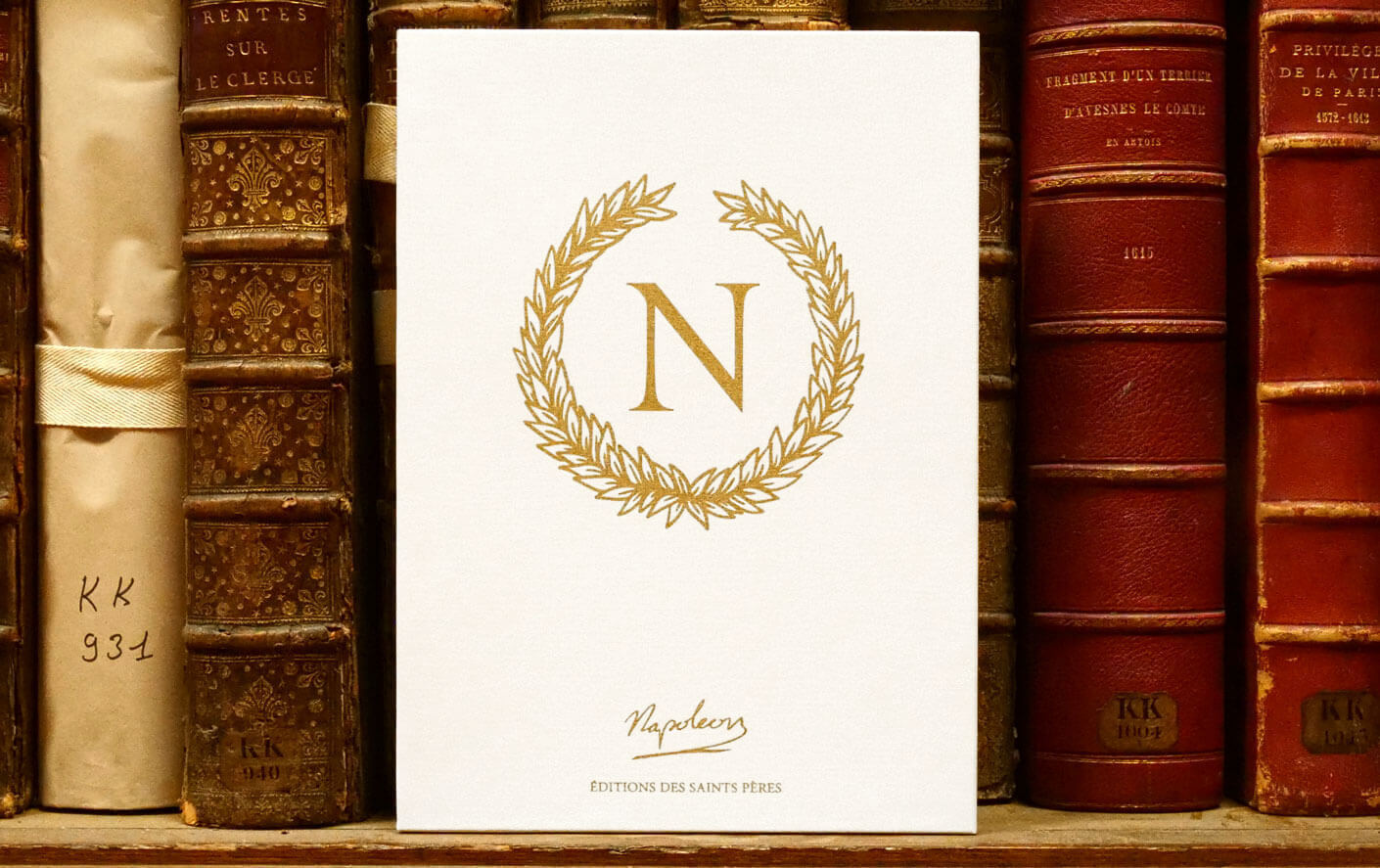
A preface by Chantal Prévot
Chantal Prévot is a historian with a degree in library sciences and history, and the director of the Martial-Lapeyre Library of the Fondation Napoléon. Her research pertains to, among other subjects, daily life in the First Empire and the history of women. Her most recent work, Le sexe contrôlé : Être femme après la Révolution was published in 2024 (Passés/Composés editions).
She is the also author of celebrated works about the city of Paris, such as Atlas de Paris au temps de Napoléon with Irène Delage (Parigramme editions, 2014) and Mystères de Paris (Cerf editions, 2021).
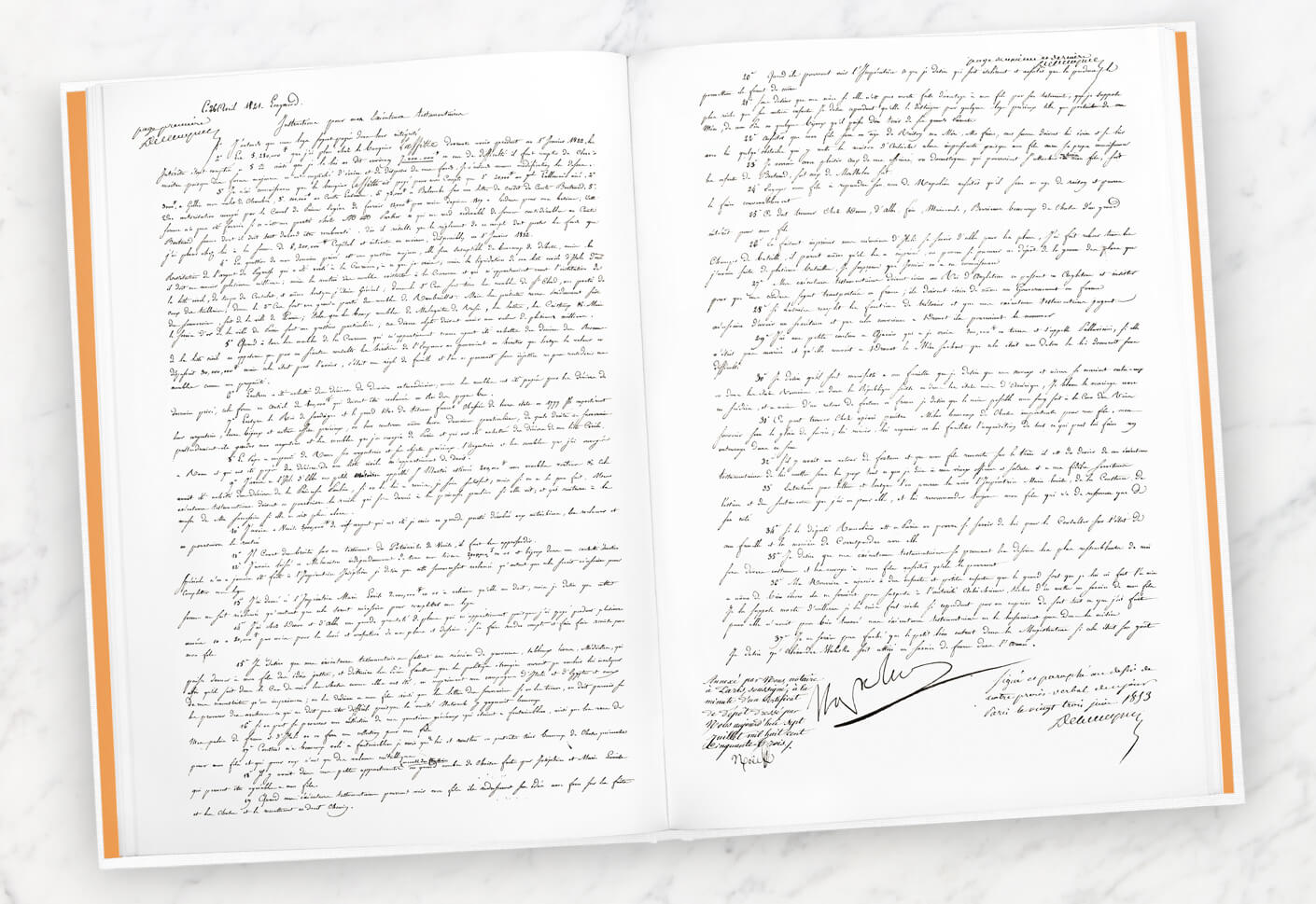
The Fondation Napoléon
The Fondation Napoléon is a renowned institution, recognised for its research and diffusion of historical knowledge, the preservation of heritage and public outreach. Its main fields of operation include the two French empires and, more widely, the 19th Century. The foundations of modern France and Europe were founded – legally, economically, socially and geopolitically – during this century of Bonaparte and the two Empires, and around principles which hold great importance still today: meritocracy, reconciliation, modernity and globalisation. The Fondation Napoléon brings to light how, across history and culture, these concepts have fashioned the French and European society of tomorrow. Their work relies upon a network of experts and prestigious private and institutional partnerships.
The entrepreneur Martial Lapeyre (1904-1984), a discreet man, passionate about history and fascinated by the Napoleonic adventure, an experienced collector and member of the Association du Souvenir Napoléonien, creation the Fondation Napoléon, which was established in 1987.
The National Archives (Paris)
The National Archives of France, part of the ministry of Culture, is the largest archival centre in Europe. Guarding the memory of France, they conserve and communicate to the public on the topic of state archives since the Middle Ages, and private archives of national interest. They contribute to historical knowledge and the sharing of civic values with the public by way of their exhibitions, publications and other outreach activities.

L'Armoire de fer is the storage for the most precious documents in the history of France: its content, added to over the years, includes notably the will of Louis XIV, the hunting journal of Louis XVI, the final letter and gazette of Marie-Antoinette’s attire, the Declaration of the Rights of Man and of the Citizen of 1789 and the Declaration of the Rights of Woman and of the Citizen by Olympe de Gouges among many others, which are closely guarded by a DNA-based archival storage system.

Deluxe edition
Numbered from 1 to 1,000,
this white and gilded edition is presented
in a large format handmade slipcase.
Printed with vegetable-based ink
on eco-friendly paper, each book is
bound and sewn using only the finest materials.
Mrs Dalloway: Thanks to a new reproduction of the only full draft of Mrs. Dalloway, handwritten in three notebooks and initially titled “The Hours,” we now know that the story she completed — about a day in the life of a London housewife planning a dinner party — was a far cry from the one she’d set out to write (...)
The Grapes of Wrath: The handwritten manuscript of John Steinbeck’s masterpiece The Grapes of Wrath, complete with the swearwords excised from the published novel and revealing the urgency with which the author wrote, is to be published for the first time. There are scarcely any crossings-out or rewrites in the manuscript, although the original shows how publisher Viking Press edited out Steinbeck’s dozen uses of the word “fuck”, in an attempt to make the novel less controversial. (...)
Jane Eyre: This is a book for passionate people who are willing to discover Jane Eyre and Charlotte Brontë's work in a new way. Brontë's prose is clear, with only occasional modifications. She sometimes strikes out words, proposes others, circles a sentence she doesn't like and replaces it with another carefully crafted option. (...)
The Jungle Book: Some 173 sheets bearing Kipling’s elegant handwriting, and about a dozen drawings in black ink, offer insights into his creative process. The drawings were not published because they are unfinished, essentially works in progress. (...)
The Lost World: SP Books has published a new edition of The Lost World, Conan Doyle’s 1912 landmark adventure story. It reproduces Conan Doyle’s original manuscript for the first time, and includes a foreword by Jon Lellenberg: "It was very exciting to see, page by page, the creation of Conan Doyle’s story. To see the mind of the man as he wrote it". Among Conan Doyle’s archive, Lellenberg made an extraordinary discovery – a stash of photographs of the writer and his friends dressed as characters from the novel, with Conan Doyle taking the part of its combustible hero, Professor Challenger. (...)
Frankenstein: There is understandably a burst of activity surrounding the book’s 200th anniversary. The original, 1818 edition has been reissued, as paperback by Penguin Classics. There’s a beautifully illustrated hardcover, “The New Annotated Frankenstein” (Liveright) and a spectacular limited edition luxury facsimile by SP Books of the original manuscript in Shelley's own handwriting based on her notebooks. (...)
The Great Gatsby: But what if you require a big sumptuous volume to place under the tree? You won’t find anything more breathtaking than SP Books ’s facsimile of F. Scott Fitzgerald’s handwritten manuscript of The Great Gatsby, showing the deletions, emendations and reworked passages that eventually produced an American masterpiece (...)
Oliver Twist: In the first ever facsimile edition of the manuscript SP Books celebrates this iconic tale, revealing largely unseen edits that shed new light on the narrative of the story and on Dickens’s personality. Heavy lines blocking out text are intermixed with painterly arabesque annotations, while some characters' names are changed, including Oliver’s aunt Rose who was originally called Emily. The manuscript also provides insight into how Dickens censored his text, evident in the repeated attempts to curb his tendency towards over-emphasis and the use of violent language, particularly in moderating Bill Sikes’s brutality to Nancy. (...)
Peter Pan: It is the manuscript of the latter, one of the jewels of the Berg Collection in the New York Public Library, which is reproduced here for the first time. Peter’s adventures in Neverland, described in Barrie’s small neat handwriting, are brought to life by the evocative color plates with which the artist Gwynedd Hudson decorated one of the last editions to be published in Barrie’s lifetime. (...)























